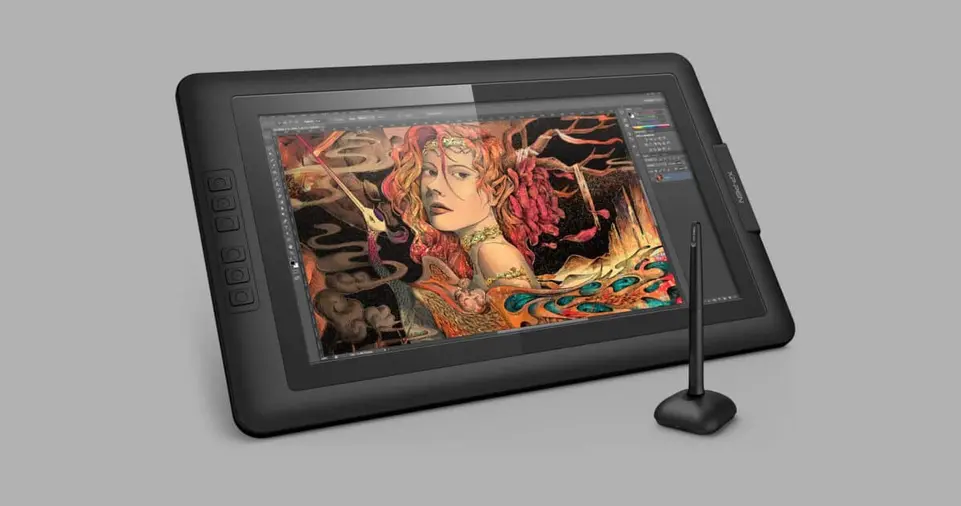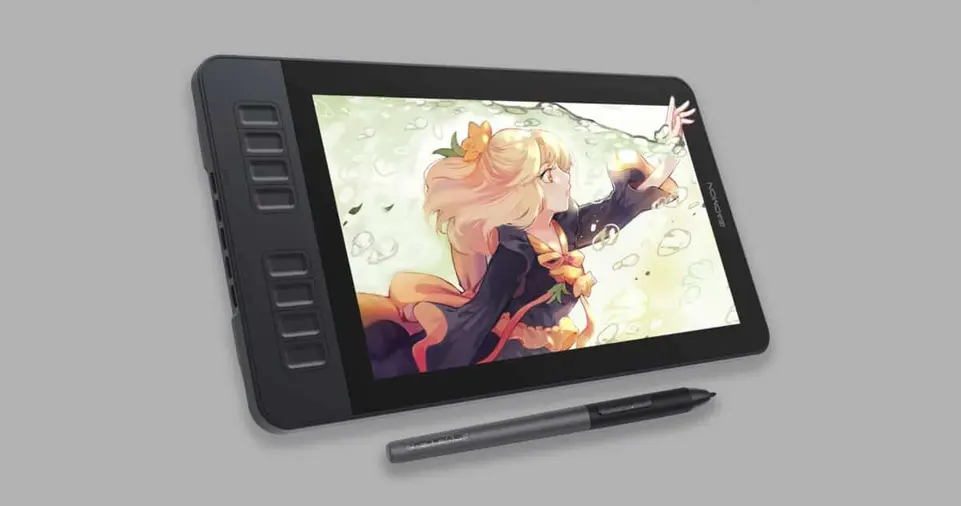Starting your digital art journey is an exciting adventure, but choosing the right drawing tablet can be daunting.
For beginners, the process involves understanding what features matter most and finding a device that fits your needs and budget.
A good drawing tablet should be easy to use, compatible with popular art software, and equipped with the essential tools to help you learn and grow as an artist.
Whether you’re sketching, painting, or designing, the right tablet will elevate your creative potential and make digital art enjoyable.
This comprehensive guide is designed to help beginners make informed decisions about drawing tablets.
We’ll explore the features to consider, review some of the best beginner-friendly options, and provide tips for getting started.
Whether you’re working on a tight budget or looking for a versatile option that can grow with your skills, there’s a tablet out there for you.
Read on to discover the best options available and gain the knowledge you need to start creating stunning digital art.
What to Look for in a Beginner Drawing Tablet
Choosing a drawing tablet is a personal decision that depends on your needs, preferences, and artistic goals.
However, there are some universal factors every beginner should consider:
Ease of Use
For someone new to digital art, a tablet should be intuitive and straightforward to set up.
Complicated features or setups can deter beginners, so look for a tablet that offers plug-and-play functionality and comes with clear instructions.
Budget-Friendly Options
Starting with a budget-friendly tablet is wise, especially if you’re unsure how much time or effort you’ll dedicate to digital art.
Affordable models often provide excellent value without sacrificing essential features.
Pressure Sensitivity
Pressure sensitivity determines how your strokes appear on the screen.
Tablets with higher sensitivity levels (e.g., 4096 or 8192 levels) allow for more detailed and nuanced control, giving you the ability to create dynamic lines and realistic shading.
Active Drawing Area Size
The active area is where you draw on the tablet. While larger areas are ideal for detailed work, they may not be necessary for beginners.
A medium-sized active area offers a good balance of comfort and precision.
Software Compatibility
Not all tablets work seamlessly with every art program. Check that your chosen tablet is compatible with popular software such as Adobe Photoshop, CorelDRAW, Procreate, or Krita.
Some tablets come with bundled software, which can be a bonus for beginners.
Customizability and Features
Tablets with programmable buttons or dials allow you to streamline your workflow.
While not essential, these features can save time as you become more proficient.
ALSO READ: How to Choose the Right Animation Style for Your Project
The Best Drawing Tablets for Beginners

There are numerous tablets designed with beginners in mind, offering a range of features and price points.
Here are the top picks:
Wacom Intuos
Why It’s Great for Beginners
Wacom is synonymous with quality in the digital art world.
The Intuos series is ideal for beginners, thanks to its user-friendly design and excellent performance.
Key Features
- Pressure Sensitivity: 4096 levels for precise control.
- Pen Technology: Battery-free, ergonomic stylus for long-term use.
- Software Bundle: Includes trial versions of popular creative software.
- Portability: Lightweight and compact, making it perfect for smaller workspaces.
Wacom Intuos is a fantastic starting point for anyone wanting a reliable and affordable tablet to kick off their artistic journey.
XP-Pen Deco Pro Small
Why It’s Great for Beginners
XP-Pen has gained popularity for offering high-quality features at competitive prices.
The Deco Pro Small is stylish, functional, and packed with features that make it suitable for beginners.
Key Features
- Pressure Sensitivity: 8192 levels for fine detail and expressive strokes.
- Tilt Support: Allows for natural shading.
- Dual-Dial Functionality: Customizable dials for quick access to shortcuts.
- Build Quality: Sleek aluminum design for durability.
With its modern design and advanced features, the XP-Pen Deco Pro Small balances aesthetics and performance, making it an excellent choice for aspiring artists.
Huion H610 Pro V2
Why It’s Great for Beginners
Huion is known for its budget-friendly devices that don’t compromise on quality.
The H610 Pro V2 is a robust tablet perfect for beginners who want professional features at a low cost.
Key Features
- Active Area: 10 x 6.25 inches, providing ample space for detailed work.
- Pressure Sensitivity: 8192 levels for precision.
- Tilt Functionality: Supports pen tilting for realistic strokes.
- Compatibility: Works well with Windows, macOS, and popular art programs.
The Huion H610 Pro V2 is a durable and versatile tablet that offers incredible value for beginners.
Gaomon S620
Why It’s Great for Beginners
The Gaomon S620 is an ultra-affordable tablet that doesn’t skimp on essential features. Its compact size and simple interface make it beginner-friendly.
Key Features
- Pressure Sensitivity: 8192 levels for dynamic strokes.
- Compact Design: Lightweight and portable, ideal for smaller desks.
- Versatility: Great for drawing, editing, and even gaming.
The Gaomon S620 is a perfect entry-level option for those who want to explore digital art without spending too much.
Apple iPad (with Apple Pencil)
Why It’s Great for Beginners
Although not a traditional drawing tablet, the iPad is an excellent tool for beginners due to its versatility and access to apps like Procreate.
Key Features
- Touchscreen Display: High resolution for crisp and vibrant visuals.
- Stylus Integration: Apple Pencil offers exceptional responsiveness.
- Multi-Purpose Device: Use it for drawing, browsing, and more.
- Portability: Slim and lightweight for on-the-go creativity.
While it’s on the pricier side, the iPad is a powerful all-in-one device for beginners who want more than just a drawing tablet.
Tips for Getting Started with Your Drawing Tablet

Learning to use a drawing tablet effectively takes time and practice.
Here are some tips to help you get started:
Master the Basics
Begin by practicing basic shapes, such as lines, circles, and curves.
Familiarizing yourself with the pen’s feel and the tablet’s responsiveness will help build confidence.
Explore Free Software
Before investing in paid software, try free programs like Krita, GIMP, or MediBang Paint.
These tools are beginner-friendly and provide all the essential features for digital art.
Customize Your Tablet
Set up shortcut buttons or dials to speed up your workflow. Customizing the tablet to match your preferences will make the experience more enjoyable.
Watch Tutorials
YouTube and online platforms offer countless tutorials for beginners.
Watching others create art can provide inspiration and teach you new techniques.
Practice Regularly
Consistency is key to improvement. Set aside dedicated time each day or week to practice and experiment with different styles and tools.
Frequently Asked Questions
1. Do I Need a Screen on My Tablet?
For beginners, a non-screen tablet is often sufficient and more affordable. However, tablets with screens can provide a more intuitive drawing experience, mimicking traditional pen-and-paper methods.
2. Can I Use a Drawing Tablet for Other Purposes?
Yes! Many tablets can be used for photo editing, graphic design, or even gaming, making them versatile tools for creatives.
3. What’s the Best Tablet for Kids or Young Beginners?
For younger artists, look for affordable, durable options like the Gaomon S620 or smaller Wacom Intuos models.
Conclusion
Selecting the right drawing tablet is a crucial step in your digital art journey.
From budget-friendly options like the Huion H610 Pro V2 to versatile devices like the iPad, there’s a tablet to suit every beginner’s needs.
Focus on ease of use, pressure sensitivity, and software compatibility to ensure a smooth start.
Most importantly, enjoy the creative process and experiment with your new device—it’s the gateway to limitless artistic possibilities.

